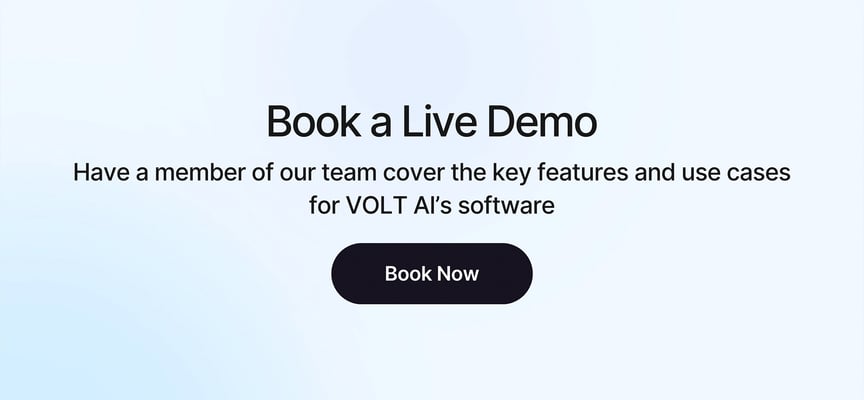Traditional security cameras simply record footage for later review—but that approach leaves your security team perpetually reacting to incidents that have already occurred. Real-time video monitoring changes this fundamental equation, transforming security operations from passive recording to active threat prevention.
Today's advanced monitoring solutions combine human expertise with AI-powered analytics to detect potential threats as they develop, enabling immediate intervention before situations escalate. This proactive approach delivers significantly improved security outcomes while often reducing overall security costs.
Let's explore ten ways real-time video monitoring is transforming security operations for organizations across industries.
Read Now: How video monitoring is transforming with AI Powered Intelligence
1. Immediate Threat Identification and Response
Real-time monitoring fundamentally changes security response timelines. Rather than discovering security breaches hours or even days after they occur, monitoring personnel identify threats as they develop, enabling immediate intervention.
Key Impact: Security teams transition from evidence collectors to active threat preventers, stopping incidents before they escalate rather than merely documenting them afterward.
Implementation Tip: Configure alert protocols that automatically escalate certain threat categories (weapons, multiple unauthorized persons) for faster response while using human verification for lower-risk alerts to maintain operational efficiency.

2. Expanded Coverage Without Proportional Staffing
Modern monitoring systems enable security teams to effectively cover substantially more area without corresponding staff increases.
Key Impact: Organizations can monitor multiple locations or expanded campus areas with the same security team, eliminating coverage gaps while optimizing personnel resources.
Implementation Tip: Create tiered monitoring strategies where high-risk areas receive continuous active monitoring while lower-risk zones use AI-assisted monitoring with human verification of potential concerns.
-1.jpg?width=2060&height=1300&name=Thumbnail%20(17)-1.jpg)
3. Deterrence Through Active Intervention
Real-time monitoring enables immediate intervention capabilities that significantly enhance deterrence.
Key Impact: When potential wrongdoers realize they're being actively monitored—through two-way audio communication, visible response coordination, or other intervention methods—they typically abandon their activities immediately.
Implementation Tip: Implement visible monitoring indicators like blue lights on cameras that activate when under active observation to maximize the deterrent effect even before verbal intervention.
Visit the full video monitoring resource center
4. Elimination of Monitoring Fatigue
Human attention span limits the effectiveness of traditional monitoring approaches, with performance declining dramatically after just 20 minutes of continuous observation.
Key Impact: Real-time monitoring systems overcome this limitation through AI-assisted threat detection, ensuring consistent vigilance across all cameras regardless of monitoring duration.
Implementation Tip: Structure monitoring workflows to rotate personnel between active response and system management roles, preventing the fatigue that comes from extended screen monitoring.
.jpg?width=3244&height=1250&name=hero%20(1).jpg)
5. Integration with Physical Security Personnel
Modern monitoring doesn't replace security officers—it makes them dramatically more effective by directing them precisely where they're needed.
Key Impact: Security officers transform from random patrollers into targeted responders, arriving at exact incident locations with detailed situation information before they even arrive.
Implementation Tip: Equip response personnel with mobile devices that receive real-time video and location data from the monitoring center, enabling better preparation and faster response.

6. Customized Monitoring Parameters
Today's real-time monitoring systems can be tailored to specific security concerns, facility operations, and even time-of-day requirements.
Key Impact: Security operations become precisely aligned with actual risk profiles rather than applying generic monitoring approaches that miss organization-specific concerns.
Implementation Tip: Review security incident reports quarterly to identify emerging patterns that should be incorporated into monitoring protocols, ensuring the system evolves with your security landscape.

7. Exposing Hidden Vulnerabilities in Real Time
Advanced monitoring immediately reveals security protocol violations you never knew were occurring.
Key Impact: Organizations gain immediate visibility into how security policies are actually being followed—from propped-open secure doors to unauthorized access patterns—allowing for swift corrective action.
Implementation Tip: Create a "first 30 days insights report" highlighting previously unknown security gaps discovered by the system to demonstrate immediate ROI and to refine security protocols based on actual behavior.
8. Remote Facility Management
Real-time monitoring enables comprehensive security coverage for unmanned or remote facilities that previously presented significant security challenges.
Key Impact: Organizations maintain security standards across all properties regardless of staffing limitations or geographic isolation, creating consistent protection enterprise-wide.
Implementation Tip: Implement escalation protocols specific to remote locations that account for longer physical response times by emphasizing intervention capabilities like audio warnings and law enforcement coordination.

9. Event Verification and False Alarm Reduction
One of the most immediate benefits of real-time monitoring is the dramatic reduction in false alarms through human verification.
Key Impact: Security teams focus exclusively on genuine concerns rather than wasting resources on false alarms, while maintaining positive relationships with law enforcement through dramatically reduced false callouts.
Implementation Tip: Track and analyze false alarm sources to continuously refine detection settings, creating a system that becomes increasingly accurate over time.
-May-27-2025-07-45-34-2258-PM.jpg?width=2256&height=1424&name=Thumbnail%20(1)-May-27-2025-07-45-34-2258-PM.jpg)
10. Comprehensive Incident Documentation
Real-time monitoring creates detailed documentation of security events from first detection through resolution.
Key Impact: Organizations maintain complete incident records including response timelines, intervention methods, and outcomes that prove invaluable for security improvement, training, and potential legal proceedings.
Implementation Tip: Implement automated incident logging that captures all system alerts, operator actions, and response coordination in timestamped records for comprehensive event reconstruction.
Implementation Considerations for Real-Time Monitoring
Let’s talk about how to make this happen in the real world.
Technology Infrastructure
Successful real-time monitoring requires several key technology components:
- High-quality cameras positioned for optimal coverage of critical areas
- Reliable network infrastructure with sufficient bandwidth for video transmission
- Monitoring software with AI-assisted threat detection capabilities
- Alert management systems for efficient incident handling
- Mobile integration for response team coordination
Staffing Models
Organizations typically choose between three staffing approaches:
- In-house monitoring team: Complete control but higher staffing costs
- Hybrid model: Internal management with outsourced after-hours monitoring
- Fully outsourced monitoring: Professional monitoring centers provide 24/7 coverage
The right approach depends on your organization's size, security requirements, and existing resources.
Measuring Success
Implement these metrics to evaluate your real-time monitoring effectiveness:
- Incident prevention rate: How many potential incidents were stopped before becoming significant events
- Response time averages: Time between detection and security team arrival
- False alarm reduction: Percentage decrease in unnecessary alerts
- Coverage efficiency: Area monitored per security staff member
- Total security costs: Often decreases despite technology investment due to more efficient operations

The Future of Video Security
Real-time video monitoring represents a fundamental evolution in security operations—shifting focus from documenting past incidents to preventing future ones. This proactive approach delivers superior protection while often reducing overall security costs through more efficient resource utilization.
As AI capabilities continue advancing, real-time monitoring systems will become increasingly sophisticated in their ability to detect potential threats, distinguish between concerning and normal behaviors, and coordinate targeted responses. Organizations implementing these systems today gain immediate security benefits while positioning themselves to leverage future advancements.
For security directors evaluating real-time monitoring solutions, focus on systems that balance advanced technology with human expertise. The most effective approaches combine AI's tireless vigilance with human judgment, creating security operations that are both more comprehensive and more efficient than traditional approaches.
Ready to transform your security operations with real-time video monitoring? Schedule a demo with VOLT to discover how our intelligent platform can enhance your existing camera infrastructure and create a more proactive security posture that prevents incidents before they impact your organization.


.jpg?width=2256&height=1424&name=Thumbnail%20(23).jpg)

.jpg?width=2060&height=1156&name=Thumbnail%20(21).jpg)

.jpg?width=2256&height=1424&name=Image%20(4).jpg)